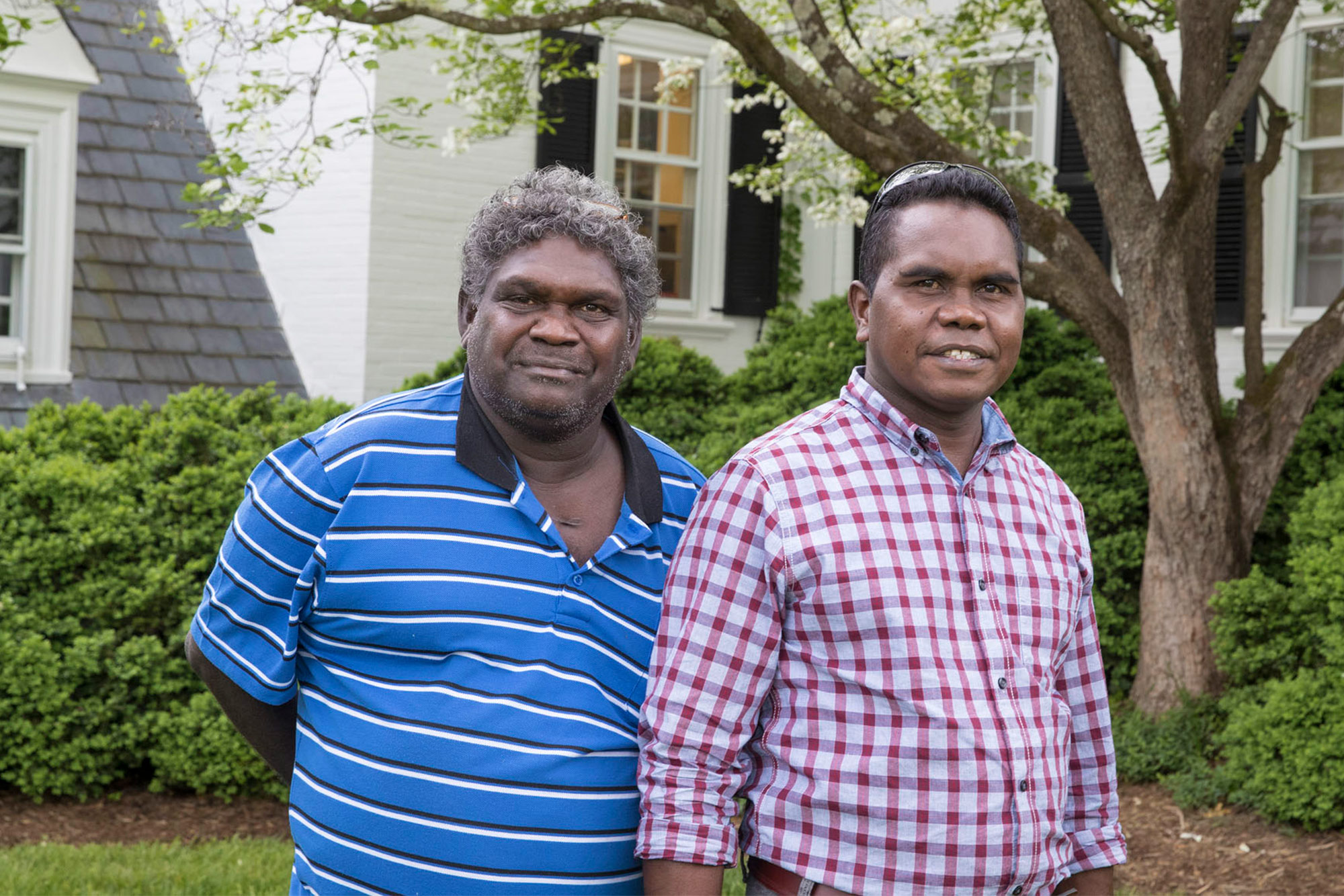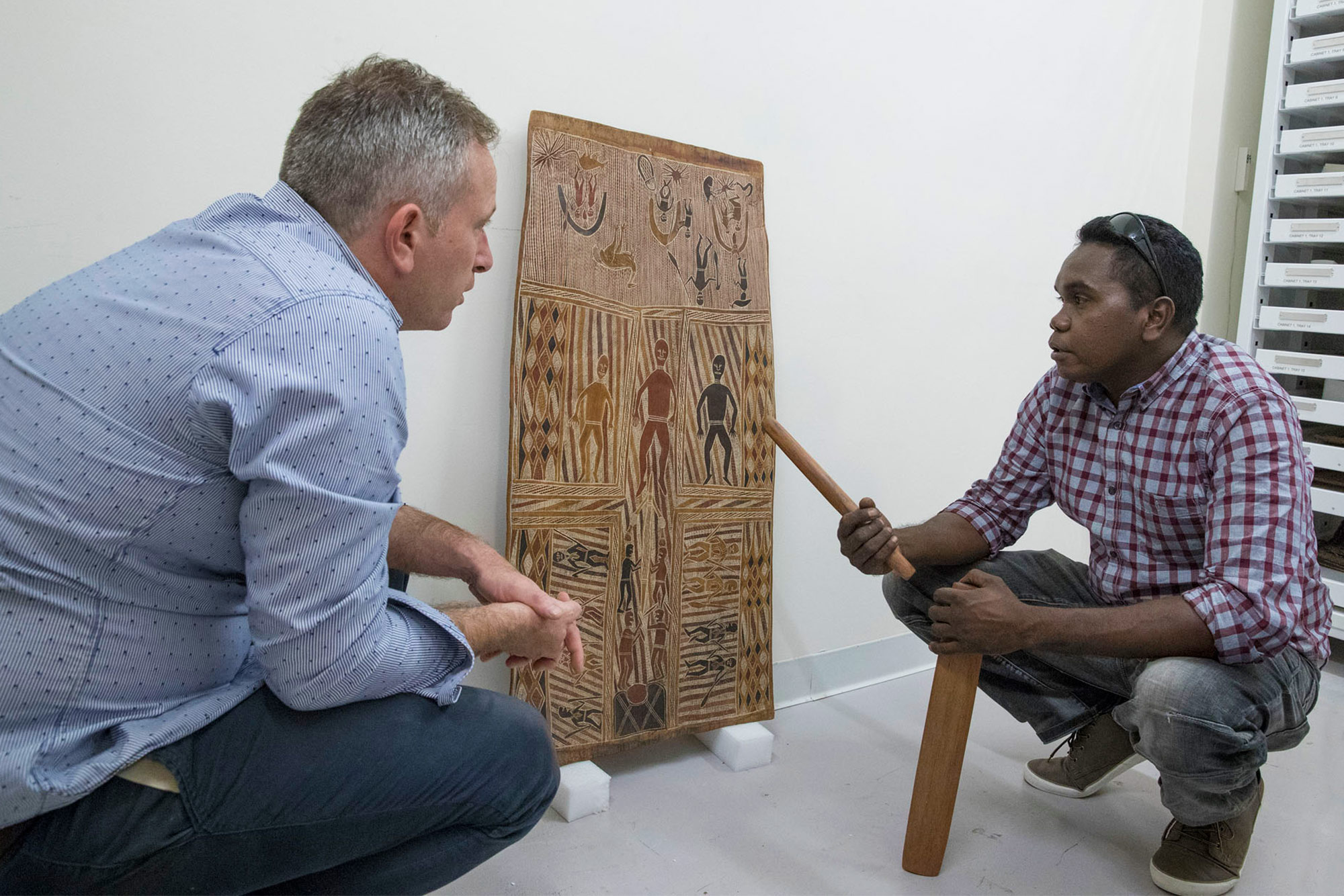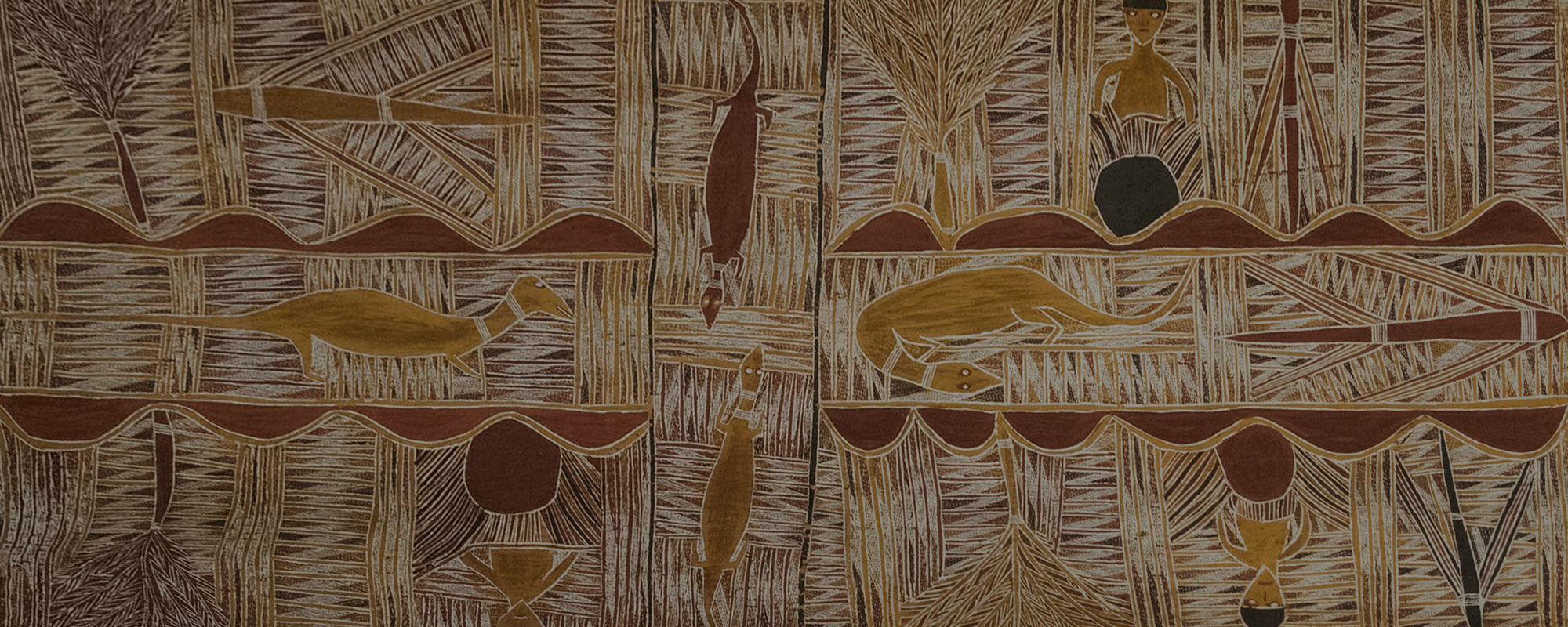One artist-in-residence at the University of Virginia’s Kluge-Ruhe Aboriginal Art Collection speculated that even Australian students do not often have as much access to Australian Aboriginal art and artists as UVA students do.
“Hearing that from an indigenous artist, Janet Fieldhouse, was incredible,” said Henry Skerritt, appointed curator at the museum last year.
The Kluge-Ruhe is the only museum in the U.S. dedicated to the exhibition and study of Aboriginal art, providing UVA students unique access to what would otherwise be a faraway community. It was established in 1997 when the late businessman John W. Kluge entrusted UVA with his collection of Aboriginal art, including the collection and archives of University of Kansas professor Edward L. Ruhe, who helped bring Aboriginal art to America.
Twenty years later, two Yolgnu artists, Wukun Wanambi and Yinimala Gumana, are in Charlottesville planning the largest touring exhibition that the Kluge-Ruhe has ever launched, surveying more than 70 years of bark paintings from hundreds of artists in Yirrkala. The exhibition title, “Madayin,” refers to the Yolngu term for the designs, meaning both sacred and beautiful.
“I am here to discover the Madayin of my ancestors so that I know it is here, safe,” Wanambi said. “It is for us, the Yolngu, to understand that it is here in another world. The exhibition will be held here in America to show the Madayin, to show the strength of our art on bark, from the past to the present, and as it continues, passed on from generation to generation.”
The artists’ visit marks the kickoff of 2½ years of careful planning for the exhibition, slated to begin in 2020. In the interim, artists, curators and researchers from Virginia to Australia will be researching and selecting artworks, planning workshops and creating supplemental educational materials, including articles and films.

Wukun Wanambi, left, and Yinimala Gumana are visiting the Kluge-Ruhe to officially kickoff planning for the exhibition. (Photos by Dan Addison, University Communications)
“We are working with Indigenous filmmakers who are recording the artists at work, giving extraordinarily rich insight into their culture,” Skerritt said. “We want this exhibition to go beyond even the artwork, sharing more about the Yolgnu laws, customs and culture.”
It will be the first major survey of Aboriginal bark paintings ever staged outside of Australia, and its origins date back to a 1996 request from Kluge.
That year, the businessman commissioned 29 works from Yirrkala, a community in Northern Australia where the Yolngu people have lived, worked and created art for thousands of years. Specifically, Kluge was interested in Yolgnu bark paintings consisting of sacred designs painted on long, thin panels of eucalyptus bark.
“It was a major moment for that art center, because bark painting had somewhat fallen out of fashion by the 1980s,” Skerritt said. “With John Kluge’s commission, the Yolgnu artists were able to produce work at the kind of scale that had not been seen for decades.”
In addition to the 29 works Kluge commissioned, the touring Madayin exhibition will include many Yolgnu works currently housed at the Kluge-Ruhe Collection and 30 new works that the Kluge-Ruhe has commissioned from current Yolgnu artists. Taken together, they will show how Aboriginal art has changed – and remained the same – in the years since Kluge’s first commission.

Many of the bark paintings in the exhibition will be chosen from the Kluge-Ruhe’s extensive collection.
“This type of exhibition – looking at one indigenous community and surveying their practice over a long period of time – has never really been done before,” Skerritt said. “The Yolgnu community is really driving this project, sending emissaries to work with us and help us contextualize their work.”
Though the exhibition’s schedule has not been finalized, Skerritt expects that it will make an appearance at major museums across the country.
“The groundswell of national interest we have discovered has been quite gratifying,” he said.
The Madayin exhibition is the next step in the museum’s ongoing mission of making Australian Aboriginal art accessible to American audiences and part of what Skerritt describes as a burgeoning global interest in Aboriginal art.
“Contemporary art is more global than it has ever been before,” he said. “As such, the Kluge-Ruhe is a vital repository for what is becoming one of the most important contemporary art movements of the 21st century. What we are doing here is one part of a global puzzle that is contemporary art today.”
The exhibition will also continue the inter-continental talent pipeline between Aboriginal communities and the Kluge-Ruhe, which continually works to give Australian Aboriginal artists a permanent platform in the U.S.

“We regularly bring Aboriginal artists here so that they can speak for themselves and their work. They work with students in the art studios at UVA and share their culture through films, dances and songs,” said Margo Smith, director of the Kluge-Ruhe.
The two artists visiting this month are part of a chorus adding their voices to events at the Kluge-Ruhe and around UVA. For example, Yolgnu artist Djambawa Marawili, another consultant on the upcoming exhibition, has spoken to classes at UVA’s School of Law. A ceremonial leader of his clan, Marawili was just assuming leadership when Kluge made his commission in 1996. He has become an international voice for the art of his people and has led legal battles in Australia compelling the federal government to recognize the rights of the Yolgnu and the legitimacy of their laws.
“Those kinds of experiences are so important for our students, because they really broaden their understanding of the world,” Smith said. “We are always looking for ways to connect these artists – who are the best experts on their work and how we teach it – with students across all disciplines.”
The team of Australian and American artists and scholars working on the Madayin exhibition believes that mission will resonate far beyond Charlottesville.
“This exhibition will challenge people’s preconceptions about Aboriginal art and increase people’s awareness of the rich collections of Indigenous Australian art that have been made and continue to be made in America,” said Howard Morphy, a professor of anthropology at Australian National University and a member of the project team. “This exhibition has been a long time coming and now is very much the right time.”
Media Contact
Article Information
May 3, 2017
/content/kluge-ruhe-readies-largest-ever-aboriginal-art-exhibition-outside-australia

